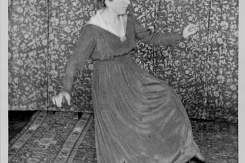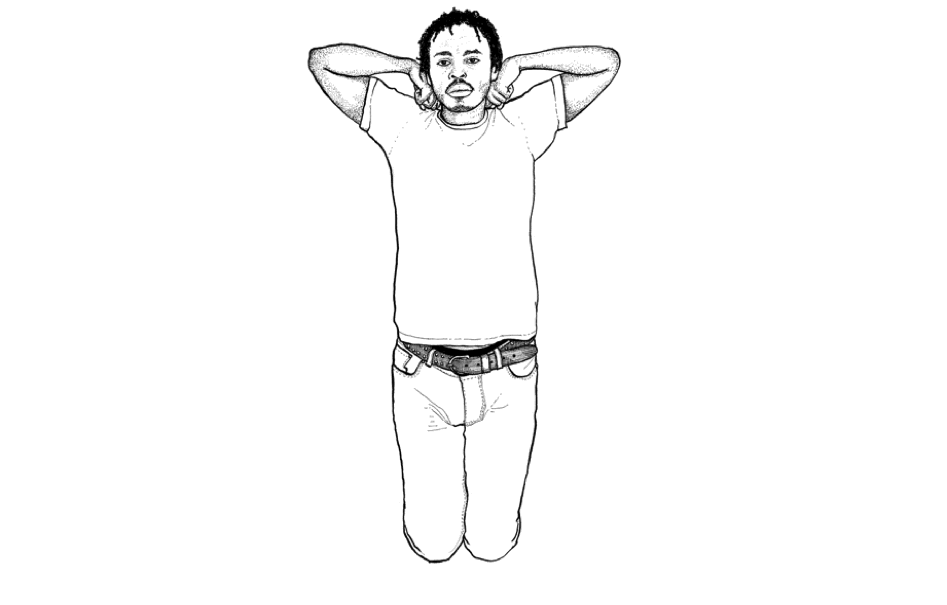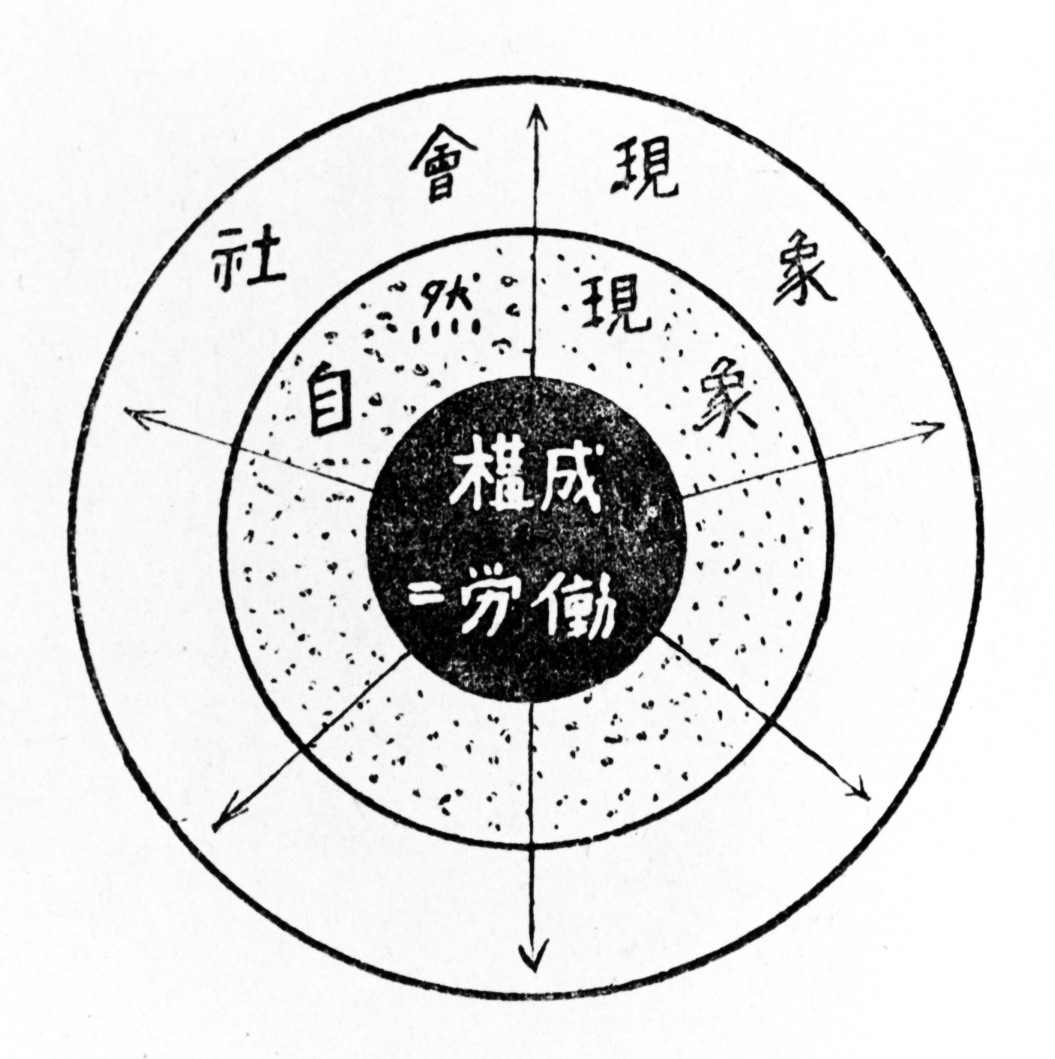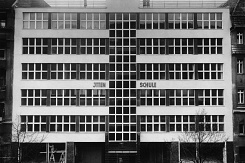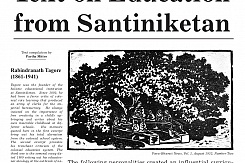Im April 1919 formulierte er sein „Programm des Staatlichen Bauhauses in Weimar“.4 Heute wird es häufig nur „Manifest“ genannt, und tatsächlich enthält das sechsseitige Faltblatt neben dem eigentlichen „Programm“ eine Grundsatzerklärung, die Gropius an anderer Stelle als „Manifest“ bezeichnete.5 Das Programm wurde damals als Beilage ungefragt oder auf Wunsch verschickt, um auf das neu gegründete Staatliche Bauhaus in Weimar aufmerksam zu machen und Schüler anzuwerben. Es beginnt mit dem Manifest. Der Text hat keine Überschrift und setzt mit einer emphatischen Erklärung ein: „Das Endziel aller bildnerischen Tätigkeit ist der Bau!“ Er fordert die Rückkehr zum Handwerk und sieht „den neuen Bau der Zukunft“ als „Sinnbild eines neuen kommenden Glaubens“. Das Handwerk wird zur Erlösung stilisiert. Künstler und Handwerker sollen zusammenarbeiten, um als künftige Arbeitsgemeinschaft Bauwerke gemeinsam zu gestalten. Mit dem Faltblatt wurde gleichzeitig der von Gropius kreierte Name „bauhaus“ zum ersten Mal der Öffentlichkeit bekannt gegeben. Diese geschickt gewählte Bezeichnung wurde schnell zum Synonym des Neuen und Gemeinschaftlichen. Die Wortmarke „bauhaus“ war das erste von zahlreichen Alleinstellungsmerkmalen, die die Schule bald auszeichneten.
Der Aufbau der Lehre wird im Programm auf drei Textseiten erläutert: Das Herzstück der Schule sind die Werkstätten, zudem ist eine mehrjährige Ausbildung vorgesehen. Die Lehrer sind keine Professoren, sondern „Meister“, die Schüler heißen „Lehrlinge“ oder „Gesellen“. Damit sind zentrale Bezeichnungen aus der zünftigen Handwerkerausbildung in eine Hochschule übernommen. Der Maler Lyonel Feininger, den Gropius aus dem Arbeitsrat für Kunst kannte und den er als ersten neuen Lehrer – Meister – an seine Kunstschule berief, schuf das Titelblatt des Manifests. Der Holzschnitt zeigt eine gotische Kathedrale, die vielfach als programmatisch interpretiert worden ist. Die drei Sterne über ihrer Turmspitze gelten als Symbole für die Künste Skulptur, Architektur und Malerei, die am „großen Bau“ zusammenarbeiten. Die Grafik verlieh der Schulgründung eine visuelle Identität, die Feiningers expressionistische Stilsprache übermittelte – 1919 die modernste Ausdrucksform. Wenig später sprach Gropius von der „Kathedrale der Zukunft“.6
In vielen Zügen hat das Programm ein Janusgesicht. Text und Bild weisen gleichzeitig in die Vergangenheit und in die Zukunft. Die Vergangenheit – das ist die gotische Kathedrale auf dem Titel. Sie steht für die Bauhütte des Mittelalters.7 Hier, so glaubte man, waren Handwerker und Künstler vereint, um gemeinsam ein Werk zu schaffen. Diese Ideen waren in der Romantik entstanden, um 1919 verschmolzen nun Gotik und Romantik als Teil eines Modernisierungskonzeptes, das in die Zukunft gerichtet war. Der Zukunftsgedanke ist im Manifest die wichtigste Botschaft. Text und Bild sind Symbole des Anfangs einer neuen Kultur.
Mit seinen idealistisch formulierten Zielen sowie seinen Rückbezügen auf Gotik und Romantik ist das Manifest sowohl tief in deutschen Kulturtraditionen als auch in der Zeitsituation nach dem verlorenen Ersten Weltkrieg verankert. Gropius’ Reaktion auf die offene Gegenwart war gleichzeitig eine Absage an jede Form nationaler Orientierung. Er sollte in den nächsten Jahren eine internationale Öffnung und Ausrichtung der Schule vollziehen. Dies betraf beispielsweise die Wahl der Meister. Lyonel Feininger war Deutsch-Amerikaner, Johannes Itten und Paul Klee kamen aus der Schweiz, Wassily Kandinsky aus Russland und László Moholy-Nagy aus Ungarn. Von den Schülern hatte ein Drittel ausländische Wurzeln.
Indien








